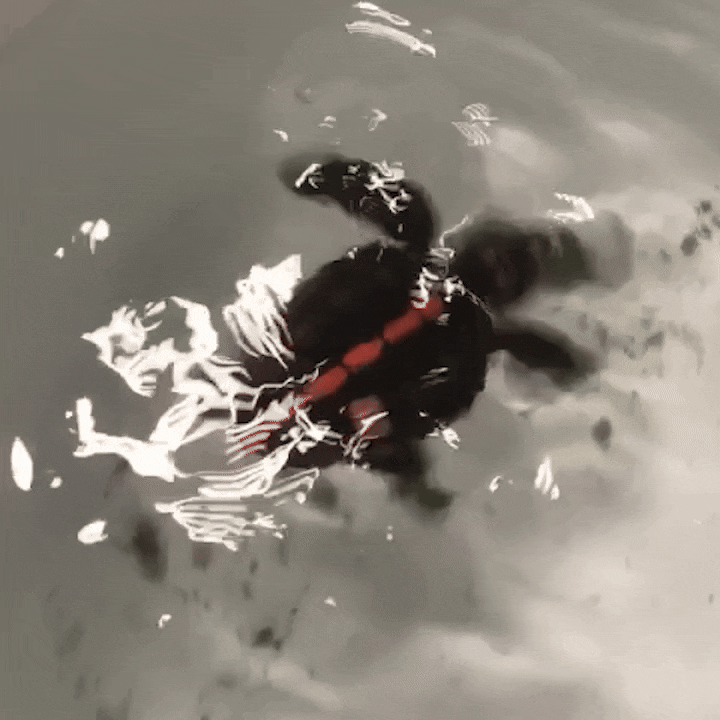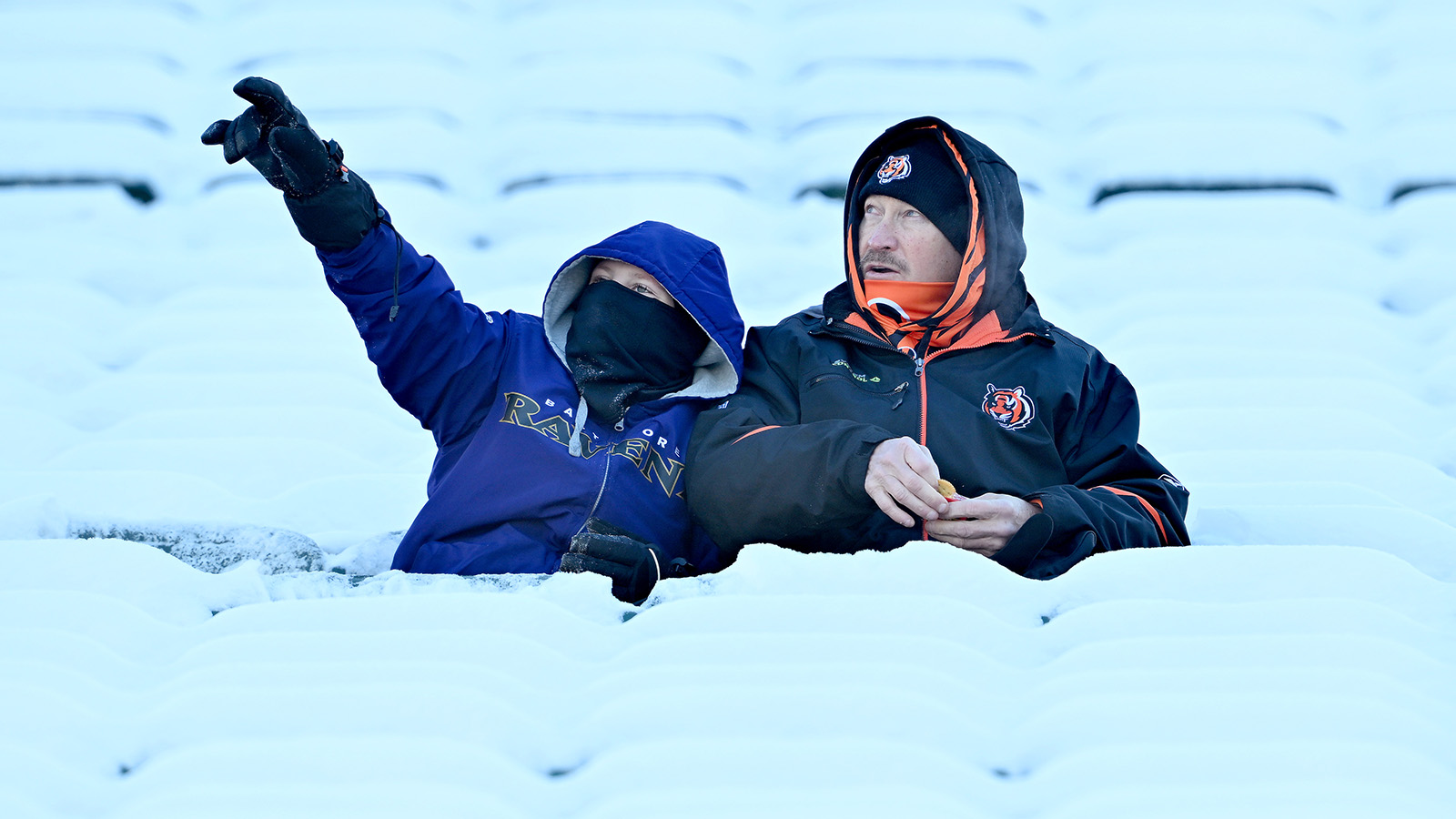Across much of the animal kingdom, the meanings behind some creatures' gestures are reserved only for other members of their species. A person watching a honeybee's waggle dance would not understand the information about a pollen-rich flower patch or nearby watering hole that the bee is communicating through its dance. Anyone lucky enough to witness the busty dance of the sage grouse will certainly be impressed—but of what, exactly, they may not be so sure. And yet I recently learned of a behavior in turtles called "turtle dance" whose meaning was immediately obvious to me, a non-turtle.
Without further ado, I present to you the turtle dance:
Has anyone ever looked more resolutely alive than this turtle? Could you ever jump for joy with such amphibious ecstasy? This turtle knows a delicious meal is coming, and it is eager with anticipation.
When baby loggerhead sea turtles sense food is on the horizon, they lose themselves in the turtle dance—lifting their heads out of the water, flapping their flippers, and even twirling in place. To these turtles, there might be nothing better than the promise of food. To this human, there is nothing better than the turtle dance.
Turtles do the turtle dance so reliably that a group of researchers designed an experiment around the turtle dance, in which they tested the turtles' ability to learn and remember magnetic fields. Their paper, recently published in Nature, looked to the turtle dance as a sign that the turtles could remember which magnetic fields promised food, and which did not.
Kayla Goforth, a biologist at Texas A&M University and an author on the new paper, started researching sea turtles and their nesting environment as an undergraduate in Florida. She was fascinated by how the turtles navigated across thousands of miles of ocean to lay their eggs on the very same beach where they hatched. "They returned to approximately the same beach 20 years after they were born there," Goforth said.
Scientists know that many migrating animals—including sea turtles, salmon, bees, and bats—can detect the Earth's magnetic field, which is generated inside the planet and extends out into space. The magnetic field helps shield us from the continuous stream of charged particles released from the sun, also called solar wind. In a process called magnetoreception, animals like sea turtles can use this magnetic field as a map across long-distance migrations, guiding them to a particular destination or helping them figure out where they are in the vast open ocean.
Although scientists knew these animals could use Earth's magnetic map as a compass, they were less sure if these animals could learn and remember the precise magnetic signatures of different locations around the world. No one had tested whether turtles could memorize new locations this way, until this new study. The researchers chose loggerheads because the species is abundant in the U.S., has been the subject of previous magnetoreception research, and are easy to raise in captivity. The researchers collected turtles as hatchlings from a beach in North Carolina and brought them back to the lab for training.
In the lab, the researchers placed the turtles in individual buckets linked to a magnetic coil system. "When you run current through those wires, a magnetic field is generated inside the coil, and so by increasing or decreasing the amount of current that you're running through the wires, you can change the magnetic field," Goforth said. By tweaking the coil, the researchers could recreate the specific magnetic signatures of places around the globe.
For the first turtle cohort, they replicated two distinct magnetic fields: one from the Gulf of Mexico, and another near New Hampshire. Although the turtles spent equal time in each of these replicated fields, half of them were only fed in the Gulf of Mexico field, and the other half were only fed in the New Hampshire field. (The turtles received a nutritious gel and also fresh squid and shrimp from the seafood market, "as an additional reward," Goforth said.) After two months of conditioning, the researchers recreated these magnetic fields but did not feed the turtles. Even with no food present, the turtles had learned that a specific magnetic signature promised food, and subsequently lost themselves in a turtle dance. In case you've forgotten what that looks like, we better run that clip back.
The researchers ran this experiment with several cohorts of turtles, exposing each group to a new pair of magnetic signatures. Each new pair of magnetic signatures represented geographically closer spots on the globe—Cuba and Delaware, Florida and Maine, Virginia and Newfoundland—as the researchers wanted to test if the turtles could detect even subtler differences in the magnetic field. The final cohort of turtles learned two magnetic fields both in the Caribbean, one near Haiti and the other near the Turks and Caicos. But the turtles had no problem distinguishing between these signatures. "That was really exciting, because we don't have a very good idea of the sensitivity of the turtle's map sense," Goforth said.
Turtles have personalities, just like people, so different turtles performed the turtle dance differently. "Some turtles will get more excited than others and do it more vigorously," Goforth said. "Some turtles will, just like, stick their head out of the water and open their mouths. They're a little bit more muted in their display."
What does a muted turtle dance look like? What a wonderful question—thank you so much for asking.
All loggerhead turtles are born with the ability to use Earth's magnetic field as a compass, which they use to navigate north or south. But when the researchers added radiofrequency waves that blocked the turtles' ability to use that compass, the turtles still managed to detect the magnetic signatures. This suggests the turtles have evolved two different mechanisms for detecting magnetism: one for the map, and one for the compass.
After training, each turtle cohort was released back to the ocean. Although the researchers are not sure how long they will retain their magnetic memories, Goforth assured me that the training will not lead any young turtles on an ill-fated quest for a squid buffet in Newfoundland. "When we release them, they have this really strong innate response to make this giant migration around the Atlantic Ocean," she said. Once in this migration, the turtles will assuredly find new locations of food, upon which time they might celebrate with one of the most inspiring expressions in the ocean: the turtle dance. We better watch it one more time, just to be safe.







